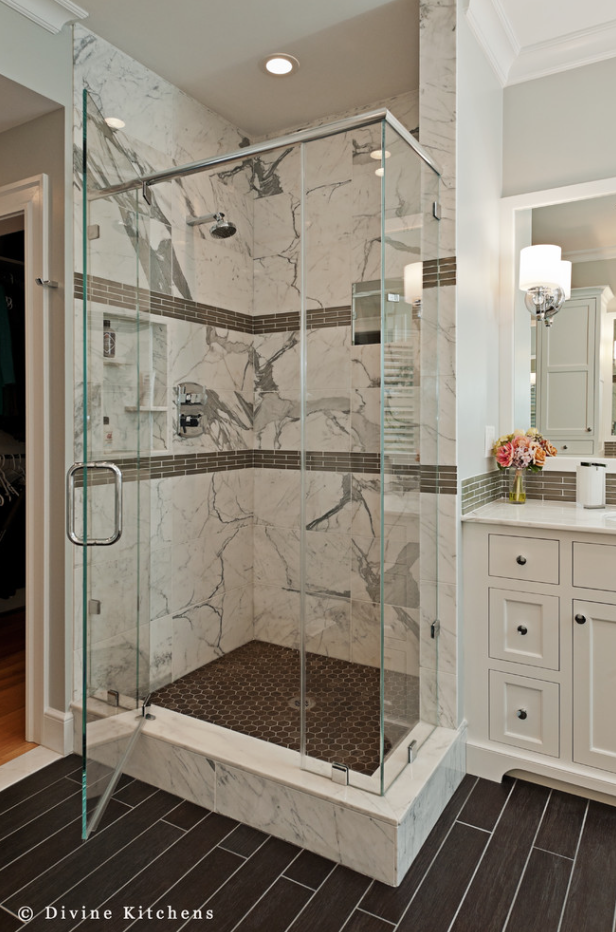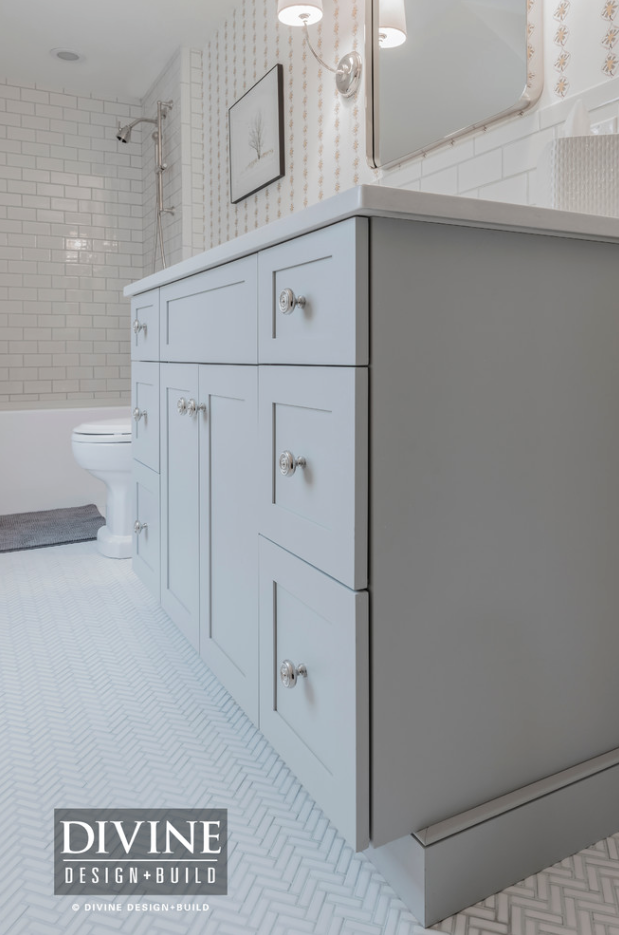What is the Best Tile for the Bathroom?
Choosing tile for a "wet space" like a bathroom is different than choosing it for a spot where its purpose is more decorative, like a backsplash or accent wall. Bathroom tile, whether it's going on the wall of the shower or bathtub, or the floor, needs to meet certain functional criteria in order to be waterproof and slip resistant enough that it's functional. So what is the best tile for the bathroom? Here are a few criteria that will help you narrow it down.
The Co-Efficient of Friction Rating
A co-efficient of friction rating, or COF, refers to how much friction a tile surface has, which translates to how slip-resistant it will be. Tile is measured for two COF ratings: static COF, and dynamic COF. Static COF refers to how much pressure a person standing still would have to apply to a surface in order to slip. Dynamic COF refers to how much pressure a moving person would have to apply. Typically, to be slip resistant, tile should have a static COF rating of at least .6, and a dynamic COF rating of at least .42. The one exception to this rule, however, it if you're using small tile. Tile that is smaller than 2" square will typically require enough grout lines to make the surface slip-resistant.
Porous vs. Non-porous Bathroom Tile
While marble showers are beautiful and very much on trend, the fact that marble tile is porous means that it will require more upkeep in the bathroom than a non-porous version like porcelain or ceramic. When used in wet spaces, marble tile needs to be sealed on a regular basis to ensure it doesn't absorb things like water, shampoo, abrasive shower cleaners, or hair dye, which can cause permanent staining and warping.
That doesn't mean marble should be avoided at all costs in the bathroom, however. It can be combined with porcelain tile floors, for example, in order to make the look more practical. Or, you can choose a marble look porcelain tile instead. Your bathroom designer should be able to provide you with a number of solutions to make marble practical.
PEI Rating.
PEI rating refers to how much pressure tile can handle before it cracks or the surface begins to wear, and should be considered when installing tile on any floor in your home. PEI ranks start at 1 (very light traffic tile, best used for walls) to 5 (heavy traffic tile suitable for commercial spaces) Floor tiles should have a PEI rating of at least 2 to ensure they can stand up to foot traffic.
For more information about choosing the best tile for the bathroom and to discuss your bathroom renovation project, get in touch with Divine Design Build.



